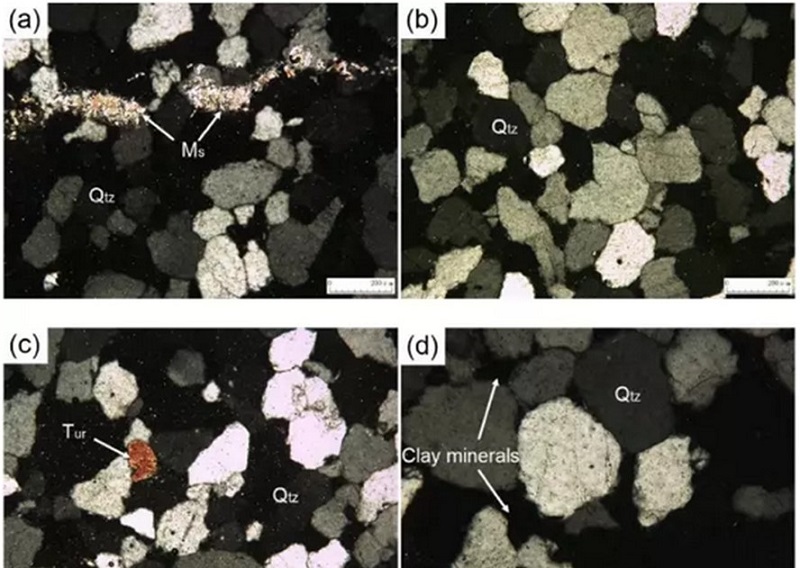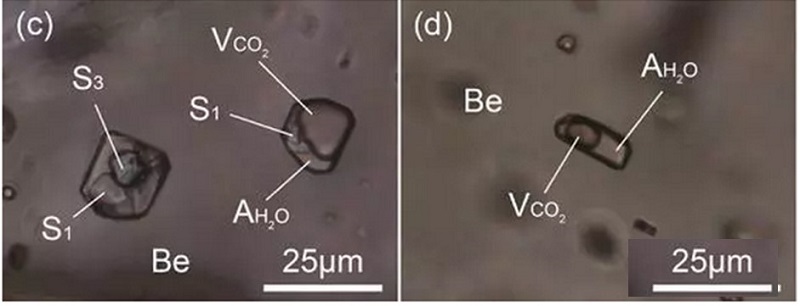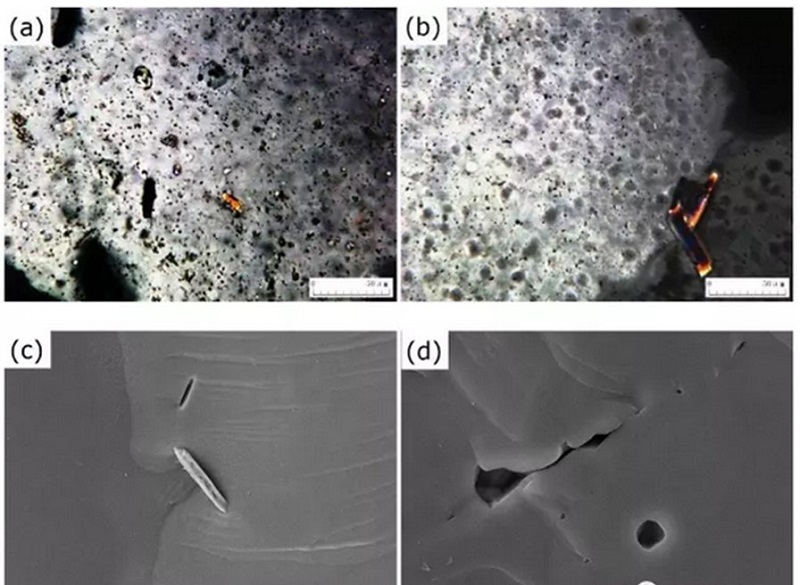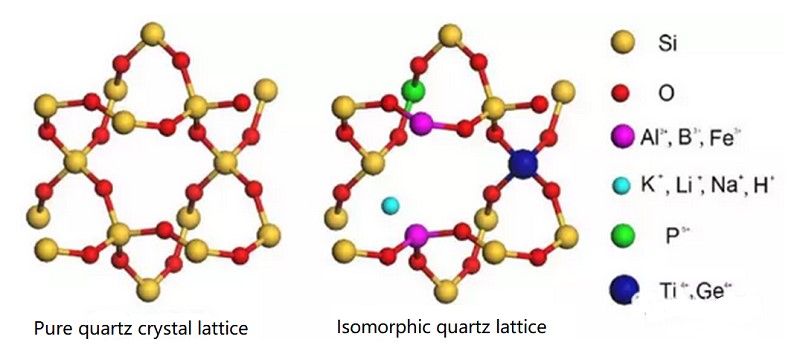In the sand washing plant, if we want to produce high-purity quartz sand, we need to choose the right raw materials, so how to determine the raw materials of high purity quartz sand?
There are obvious differences in quartz ores formed under different geological origins. The mineral composition, disseminated grain size characteristics, crystal structure and lattice impurities, chemical composition and occurrence of impurity elements directly affect the quality of ore raw materials.
1.Chemical composition
Chemical composition is the concentrated embodiment of the elements in quartz raw materials. The content of impurity elements in raw ore has a key impact on the quality of high-purity quartz sand, which determines the economic value and application field of the product.
For example, quartz glass is one of the main products of high-purity quartz sand, and its performance index depends on the melting process to a certain extent. The chemical purity is only related to the purity of raw materials. If the content of Al, B, P, alkali metal elements and key transition metal elements exceeds the requirements, it will affect the melt viscosity and cause defects such as product devitrification, high temperature deformation, low softening point and light loss.
Among the trace elements harmful to the performance of high-purity quartz products, the 12 elements that have great influence are A1, B, CA, Cr, Cu, Fe, K, Li, Mg, Mn, Na and Ni. It is of great significance to find out the occurrence types and specific existing forms of these harmful elements for understanding the properties of raw materials and technological design of beneficiation and purification.
2.Mineral composition
Gangue minerals in quartz raw materials are composed of independent minerals with harmful impurity elements in chemical composition, especially some aluminosilicate minerals with high content of alkali metal elements and A1 elements (such as dolomite), which are the main carrier minerals of impurity elements. The type, content and particle size of these minerals have a serious impact on the quality of quartz raw materials.
Feldspar and mica are the most common gangue minerals in quartz raw materials, while other gangue minerals are related to ore types.
There are zircon, tourmaline, calcite, pyrite, limonite, garnet and other gangue minerals in quartzite;
Opal, chalcedony, tourmaline, magnetite, ilmenite, hematite, ankerite and rutile are common cements in quartz sandstone;
Vein quartz contains typical hydrothermal minerals, such as fluorite and iron minerals.
3.Grain size characteristics of embedded fabric
There are obvious differences in the disseminated grain size characteristics of different types of quartz materials, which is closely related to the genesis of the deposit.
For example, the disseminated grain size of vein quartz is mainly affected by the ore-forming environment and magmatic activity, often associated with Muscovite and other aluminosilicate minerals. The disseminated grain size of these minerals directly affects the dissociation degree of quartz monomer. When the crushed grain size is smaller than the later quartz pulse width, the gangue minerals can be dissociated from the intergrowth.
The larger the intensity of diagenesis and metamorphism, the more obvious the difference of grain size between quartz and other minerals. The type of intergrowth with Muscovite and other gangue minerals gradually changes from adjacent type to fracture or even inclusion type, the less easy it is to dissociate.
Inclusion characteristics
In the process of quartz crystal growth, residual hydrothermal components or accessory minerals are easy to be mixed to form inclusions. High pressure metamorphism may also lead to the dissolution of daughter mineral inclusions (such as rutile).
Inclusions can provide abundant metallogenic information such as paragenetic Association, temperature and chemical composition of fluid. The distribution, phase state, temperature and chemical composition of inclusions can distinguish quartz of different genesis.
For high-purity quartz raw materials, the inclusion type and content have a significant impact on the quality of high-purity quartz sand
First, it constitutes the main source of impurity elements;
Second, it will also change the melting behavior of quartz industrial raw materials.
4. Lattice impurities
In addition to gangue minerals and inclusions, a small amount of impurity elements exist in quartz crystal in the form of isomorphism, forming lattice impurities in quartz raw materials.
In the current process of high purity quartz mineral processing, lattice impurities can hardly be removed, which determines the limit of raw material purification potential.
5.Crystal structure
α- Quartz (low-temperature quartz) is one of the most widely distributed minerals in the earth's crust, and widely exists in magmatic rocks, sedimentary rocks and metamorphic rocks. α- The crystal structure of quartz belongs to the cubic system, which can exist stably under normal pressure and temperature below 573 ℃. It is almost the only source of high-purity quartz mineral.
6. Thermal effect characteristics
The thermal properties of quartz are the specific performance of crystal structure, chemical composition and inclusion characteristics in the process of temperature and pressure change. The thermal analysis of quartz raw materials is not only conducive to identify the mineralogical characteristics, but also has important significance for later processing.

For more information about high purity quartz sand and sand washing plant, please visit https://www.9silica.com , or contact us directly by +86-18118821087(whatsapp).

The flotation method provided by Sinonine can effectively remove feldspar in quartz sand, which is widely used in quartz sand washing plant and has achieved good results.
Sinonine high purity silica sand washing plant can work 7x24 hours to Meet the needs of customers in large production. www.9silica.com, +8618118821087
Raw sand go into silica sand washing plant to become high purity sand.
High-purity quartz powder has excellent optical, thermal, chemical stability and radiation resistance, so it has a wide range of applications in electronic industry, optical communications, military and other fields. With the development of electronic industry, optical communication, laser, optics a
sand washing plant for high purity sand
After drying by fluidized bed dryer system, the moisture content of silica sand can be less than 0.5%, and the moisture distribution is very uniform.
Most of the hydraulic graders in sand washing plants adopt the automatic control system, which has achieved good results.
The processing technology of high purity quartz sand washing plant usually includes complex processes such as calcination, water quenching, classification, magnetic separation, flotation, acid leaching, cleaning and chlorination roasting.
Thank you for your interests in Sinonine, Please feel free to submit your inquiry information to us, our expert will contact with you as soon as possible.